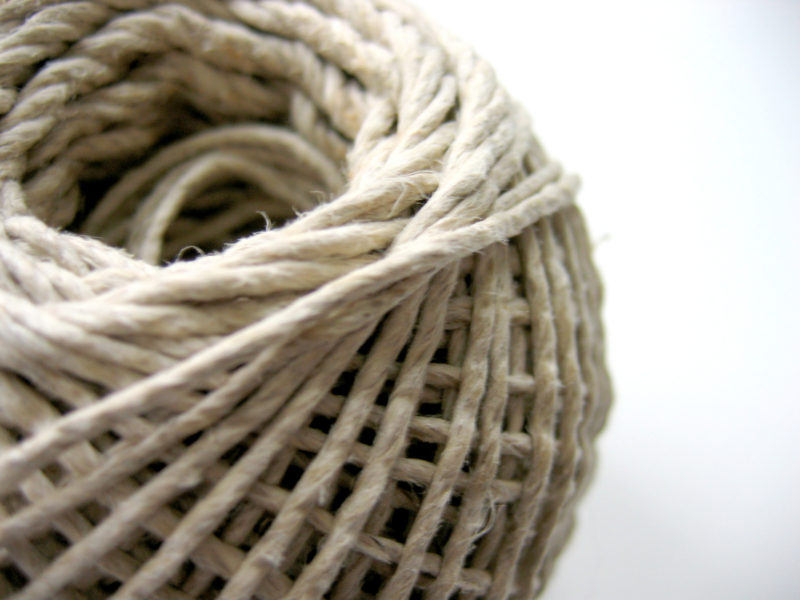JEFFERSON CITY, Mo. — Ryan Semke used to be against industrial hemp and now he is one of Missouri’s farmers wanting to grow the crop.
“I used to think it was bad,” the St. Charles County farmer said. But with a little research into what the crop is, its uses and what you can’t do with it — get high — he changed his opinion.
“I didn’t know nothing about it,” Semke said. “I can admit when I’m wrong.”
Now he, along with several others in the Show-Me State, want to grow industrial hemp, adding it the mix of rotational crops.
Currently, it is illegal to grow hemp in Missouri. Hemp and marijuana come from the same cannabis species, cannabis sativa, but are from different subspecies making them “scientifically and genetically different.” Industrial hemp — which has less than .3 percent THC — is non-psychoactive, which means it is unable to intoxicate the user, and specifically bred for fiber and oil use.
In 1937, the Marijuana Tax Act strictly regulated the cultivation and sale of all cannabis varieties. The Controlled Substances Act of 1970 classified all forms of cannabis as a Schedule I drug, making it illegal to grow it in the United States.
However, a provision in the 2014 Farm Bill allows states to pass their own legislation regarding industrial hemp. Currently, 34 states including Nebraska, Illinois, Kentucky, Tennessee, and Arkansas — five of the eight states that border Missouri — allow the cultivation of hemp for commercial, research or pilot programs.
“It’d help the farmer a ton,” Semke said. “We really need another crop.”
Corn is expensive to grow and most farmers are barely breaking even. With increased efficiency and increased yields per acre, there is more corn produced than demand, a story not unlike that of other rotational crops produced in Missouri.
Industrial hemp, an annual crop, grows well in a less-than-ideal soil — which, there is no lack of in mid-Missouri — and is a relatively low management crop. There are no approved pesticides or herbicides in the United States, thus eliminating the need to spray several times while the crop grows — like corn — and as the crop “outgrows most weeds,” very little fertilizer is needed.
Hemp can be processed into fabrics, yarns, fibers, carpeting, home furnishing, concrete, cosmetics, nutritional supplements, pharmaceuticals, foods, beverages, rope, paper, plastics, insulation, biofuels, and more.
“The global market for hemp consists of more than 25,000 products in nine submarkets: agriculture, textiles, recycling, automotive, furniture, food and beverages, paper, construction materials, and personal care,” according to a 2017 Congressional Research Service report. “Hemp can be grown as a fiber, seed, or dual-purpose crop.”
The stalk and the seed are the harvested products. The interior of the stalk has short woody fibers called hurds; the outer portion has long bast fibers. Hemp seed/grains are smooth and about one-eighth to one-fourth of an inch long.
The stock can range from 4 feet to 18 feet tall and the type of hemp grown is selected based on the processing purpose and market. Taller varieties of hemp are more desired for fiber production. Shorter stocks are more attuned to seed production.
“Not all types of hemp grow well everywhere,” said Anndrea Hermann, a native Missourian who works for Hemp Technology Collective and has a masters degree in Hemp Fibre Agronomy.
Hemp is just like any other crop, where certain varieties grow better in some regions compared to others. Hermann doesn’t know what varieties would grow well in Missouri and suggests a variety trial.
Hermann points to North Dakota as an example. In collaboration with the Department of Agriculture and agricultural-based colleges, North Dakota did a variety trial before they issued any licenses. They looked at what infrastructure was already in place and did test plots with 14 different varieties of hemp to determine which varieties grew well in their state.
“They took the risk out from the farmer,” Hermann said. “Farmers need to make money, they don’t have it to waste.”
“No one is going to go all-in,” according to Semke. He said it would take him about five years after legislation passes before getting hemp fully operational.
Based on his own research, hemp would work well in his operation. Planting in late March, early April — weather permitting — and harvesting in early August, hemp would work well in tandem with corn.
Missouri already has facilities that could process the hemp oil but has no processing plants for fiber. While farmers would have the option of shipping the crop out of state for processing, supporters say that facilities being built in Missouri to process hemp would create jobs.
“This is not a miracle crop,” Hermann said. “There is a lot of economic opportunity with hemp, but it is not a miracle crop. Look at it realistically, like any other crop.”
But hemp is not being treated as any other crop. Not on a federal level or a state level. Missouri currently has two nearly identical bills working their way through the legislature — Rep. Paul Curtman’s HB 2034 and Sen. Brian Munzlinger’s SB 547.
In both bills, hemp would be regulated more than any other crop. And Rep. Tom Hurst — the only “no” vote the legislation got in the House agricultural committee — sees that as a problem.
“If the crop does not pose a risk to the public, then everyone should have the opportunity to grow it; without government interference,” Hurst said. “When you have to pay a fee to the government, get a license from the government, and get fingerprinted by the government to grow a crop, this is not freedom.”
Hermann also saw another potential issue with the legislation: There is no pedigree seed program established, thus farmers would be able to retain the grains from the plant and use that as seed for the next year. Which, according to Hermann, would limit the number of registered seed suppliers willing to sell to Missouri farmers.
“The language [of the bill] is very similar to what was originally passed in Oregon,” Hermann said. “And they have had to go back and change it.”
Since the legislation was kept on the shorter, simpler side, seed/grain retention could be an issue handled by the Missouri Department of Agriculture when establishing the pilot program.
The legislation would give the Department a lot of wiggle room when establishing the program, Hermann said, which would leave the decisions up to farmers and those who know farmers best.
“We want to grow this,” Semke said. “At this point, we just need the legislation to pass.”

Alisha Shurr was a reporter for The Missouri Times and The Missouri Times Magazine. She joined The Missouri Times in January 2018 after working as a copy editor for her hometown newspaper in Southern Oregon. Alisha is a graduate of Kansas State University.












